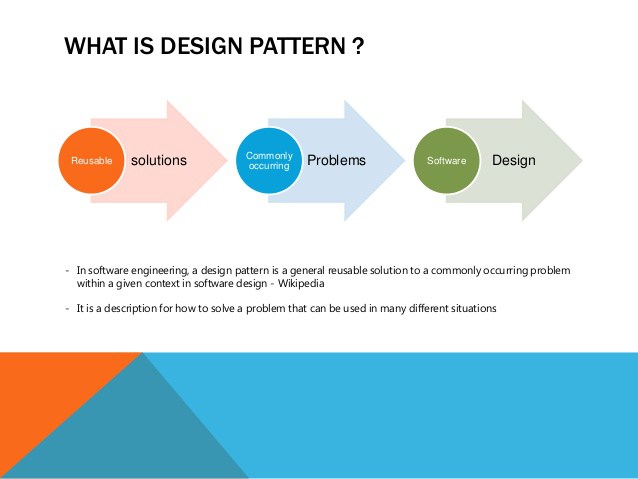A design pattern is a general reusable solution to a commonly occurring problem in software design. A design pattern is not a finished design that can be transformed directly into code. It is a description or template for how to solve a problem that can be used in many different situations. Object-oriented design patterns typically show relationships and interactions between classes or objects, without specifying the final application classes or objects that are involved.
Design patterns reside in the domain of modules and interconnections. At a higher level there are architectural patterns that are larger in scope, usually describing an overall pattern followed by an entire system.
There are many types of design patterns: Structural patterns address concerns related to the high level structure of an application being developed. Computational patterns address concerns related to the identification of key computations. Algorithm strategy patterns address concerns related to high level strategies that describe how to exploit application characteristic on a computation platform. Implementation strategy patterns address concerns related to the realization of the source code to support how the program itself is organized and the common data structures specific to parallel programming. Execution patterns address concerns related to the support of the execution of an application, including the strategies in executing streams of tasks and building blocks to support the synchronization between tasks.

There are:
- Creational design patterns
- Structural design patterns
- Behavioral design patterns

